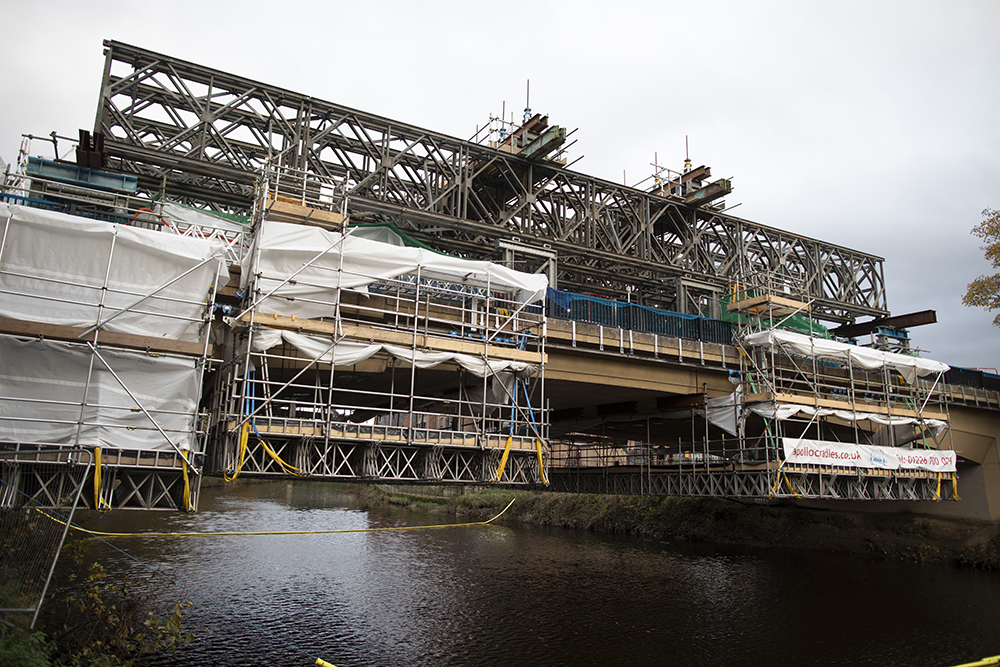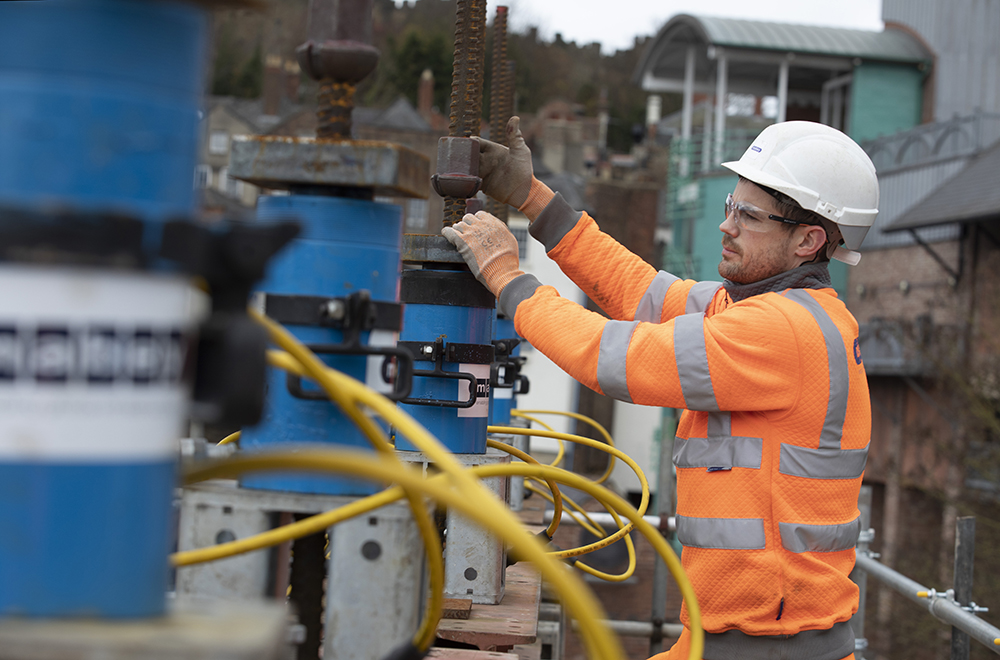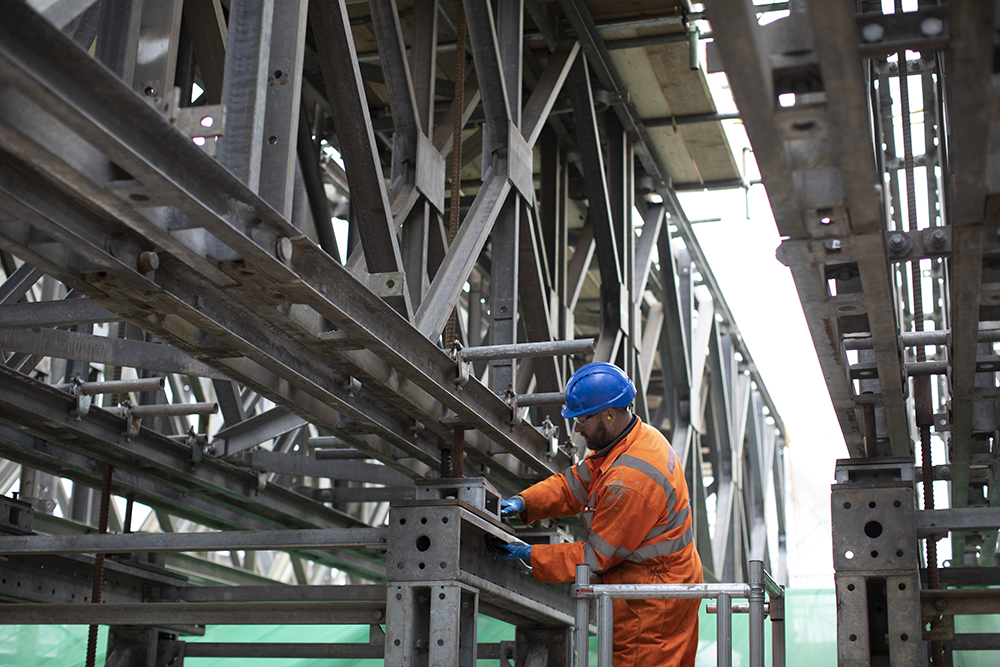
Monitoring technology and an unusual propping system from Mabey were vital to the renovation of Durham’s New Elvet Bridge.
It is estimated that there are around 72,000 road bridges in the UK, spanning everything from highways and railways to rivers and valleys. Maintaining and repairing these bridges, ensuring they are kept open and safe for pedestrians and vehicles to use, is imperative.
With bridge closures having a potentially significant knock-on effect on traffic flow and the local community, any solution that can help project teams to carry out investigative and remedial works quickly and safely is invaluable.
It’s for this reason that so many asset managers and contractors choose temporary propping and jacking, used to provide structural support and even help lift a bridge off its support piers while work is carried out underneath.
Structural monitoring in conjunction with any propping and jacking system can offer further value. Presenting teams with live, up-to-the minute insight into the behaviour of the bridge, structural monitoring can be used to ensure the integrity of the structure is maintained while work is underway and, in some cases, even help keep the road open to traffic.
When propping, jacking and monitoring are used together, the value and benefits for asset managers and contractors – as well as the overall project delivery – can be huge, as recently demonstrated on the New Elvet Bridge in Durham, where Balfour Beatty has been carrying out major repairs. The project began in July 2020 with an estimated 15-month programme.

First built in 1975, the New Elvet Bridge in Durham forms an essential part of the city’s transport infrastructure, linking the east and west sides of the city via the River Wear. As a result of its important role, the bridge is used by nearly 17,000 vehicles every day, helping to greatly reduce traffic in a busy metropolitan area.
Unfortunately, following nearly five decades of use, the bridge was in need of some essential repairs and Durham County Council identified a need to reconstruct a significant and critical portion of concrete used on the bridge. Alongside this, the council decided that other areas of the bridge would benefit from smaller concrete repairs. Additionally, the team recommended the installation of a cathodic protection system to further protect the bridge reinforcement.
For the complicated temporary works, Balfour Beatty turned to specialist Mabey Hire.
Billy Darcy, senior engineer at Mabey Hire, says: “Given the bridge’s considerable size, the project team faced some unique challenges. Most notably, the plan involved finding a way to lift the 490-tonne centre span bridge deck to enable the rest of the repair job. As the bridge is located above the River Wear it made standard propping techniques more difficult to achieve.”
After consultation with the principal contractor, Mabey elected to use a bespoke truss system, made from Mabey Universal Bridging Panels, as opposed to a more traditional propping solution to conduct the lift and enable the repair work to get underway. This innovative solution also made use of Mabey Hire’s Mat 125 and Mass 50 high load propping systems in conjunction with a hydraulic system comprising of hollow ram jacks and DYWIDAG bar (high tensile alloy steel bar).
The engineered scheme has helped the team to overcome the challenges of water and size and included the unusual approach of propping the bridge from above.
“This effective solution allowed the bridge deck to be fully supported whilst the defective concrete was removed,” says Darcy. “What’s more, the powerful system was able to lift the considerable weight of the concrete deck up by 300mm so that the joints could be reconstructed. Once completed, the structure was lowered back into place for the rest of the repairs to be carried out.”

With the project team required to lift the existing structure to such a height, it was essential to ensure the structural integrity of the bridge remained intact. To this end, Mabey Hire provided a monitoring solution to track real-time displacement and load monitoring during the live jacking operations. Thanks to this technical expertise, the project team had greater insight into the bridge’s structural integrity and was able to ensure its repair efforts did not end up causing unintended damage. In turn, this made it easier to prevent project delays, which had to be avoided given the bridge’s important role in connecting both sides of the city.
Dan Fawcett, project manager at Balfour Beatty, says: “The unique solution developed by Mabey Hire has allowed us to undertake the contract works whilst supporting the central deck section. The lifting was undertaken in one smooth operation which was electronically controlled for greater accuracy which was critical for the utilities that are within the structure of the bridge.”
The repair project is on course to finish on schedule in autumn 2021. Once completed, the New Elvet Bridge will feature a refurbished deck joint on the northern (Claypath) side of the bridge, as well as a continuous deck structure with reduced future maintenance requirements on the southern (Elvet) side. The bridge deck will also be fully waterproofed with improved drainage systems incorporated.











